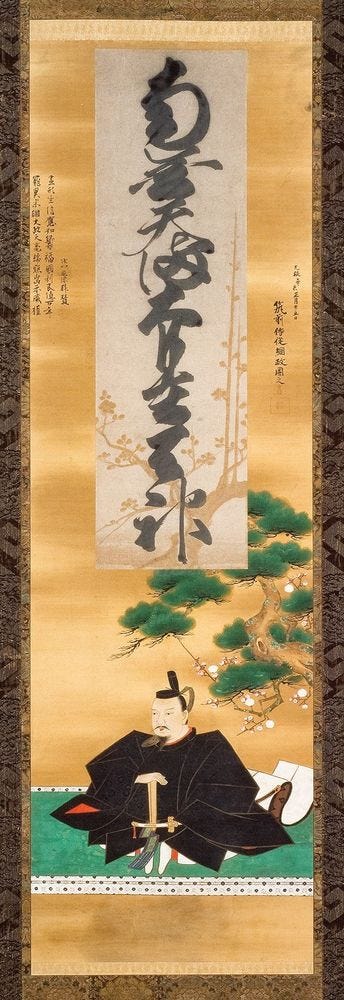
Shinto: Discovery of the Divine in Japanese Art opens next week at the Cleveland Museum of Art. Ten years in the making, this exhibition — on view only in Cleveland — features a selection of rare works designated by the Japanese government as Important Cultural Properties. The timing of this exhibition coincides with a new era in Japan’s history, the name of which, Reiwa, has connections to the artwork on display in the CMA’s exhibition. You can dive deeper into these connections in an essay, Seasonal Connections: Japan’s New Era, Plum Blossoms in Dazaifu by Sinéad Vilbar, the CMA’s curator of Japanese art and curator of the exhibition ‘Shinto: Discovery of the Divine in Japanese Art.’
*****************
Extract from a longer piece by Sinéad Vilbar on Dazaifu Shrine in Kyushu, its kami Tenjin, and portrayals in Shinto art.

Dazaifu is the site of a famous shrine dedicated to the kami Tenman Tenjin, the posthumously deified spirit of the courtier Sugawara no Michizane (845–903). Tenjin is strongly associated with the plum. He had a beautiful plum tree outside his home in the ancient capital Heian (now Kyoto), to which he composed a tearful waka poem when he left to travel to Dazaifu to assume a government post in de facto exile. This fraught scene depicting Michizane saying goodbye to his beloved plum is touchingly painted in the second scroll of the 1311 illustrated handscroll set The Illustrated Miraculous Origins of Matsuzaki Tenjin Shrine (Matsuzaki Tenjin engi emaki), on view during the first rotation of the exhibition (April 9–May 19) in the section titled “Gods and Great Houses.

This set, belonging to Hōfu Tenmangū, an important Tenjin shrine in Yamaguchi Prefecture, is designated as an Important Cultural Property by the Japanese government.
Tenjin’s shrine in Dazaifu is called Dazaifu Tenmangū. This April has been a momentous time for Dazaifu Tenmangū, as its head priest has retired and his son has taken the chief position at the shrine. Shinto: Discovery of the Divine in Japanese Art includes three works from this shrine dedicated to Tenjin over the two rotations that take place during the exhibition. One of the works is the record of a poetry gathering thought to have been held at the shrine in the Nanbokuchō period (1336–1392). Renga, or linked-verse poetry, was composed as a ritual means of honoring Tenjin.

Just as Buddhist monks might read sacred texts called sutras before Buddhist deities as a ceremony, composing poems together before Tenjin was a religious activity.

The other work from Dazaifu Tenmangū on view in the exhibition’s first rotation is a marvelous calligraphic rendering of the name of Tenjin by emperor Go-Yōzei (1571–1617) that is affixed to an image of Tenjin painted by a regional leader of Dazaifu.
Tenjin is shown in formal courtly garments seated before a pine tree and a flowering plum tree. Paintings and calligraphies like this one would have been displayed as the presiding icon over poetry gatherings offered to Tenjin.
May we all be hardy like the plum blossom, the first flower to bloom after a cold winter!

Leave a Reply